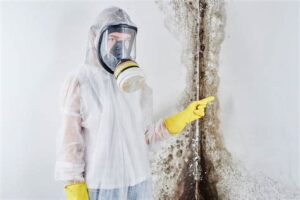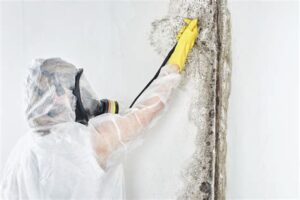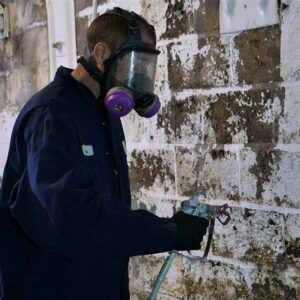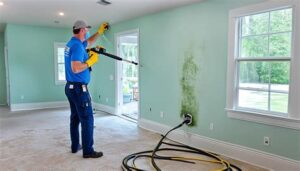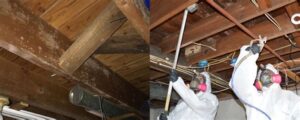auto mold remediation, Discover essential insights on identifying, removing, and preventing auto mold, ensuring vehicle health, and maintaining a mold-free environment for optimal performance.When it comes to vehicle maintenance, many owners overlook a hidden menace: auto mold. This unwelcome guest can not only damage your vehicle’s interior but also impact its performance and even your health. Understanding how to identify and effectively remove auto mold is vital for every car owner. In this article, we will explore the telltale signs and symptoms of mold growth, share proven strategies for mold removal and long-term prevention, and emphasize the critical importance of prompt remediation. Additionally, we’ll discuss how mold affects your vehicle’s health and offer best practices to ensure a mold-free environment. Read on to equip yourself with the knowledge needed to keep your vehicle safe and sound.
Identifying Auto Mold: Signs and Symptoms to Watch For
Identifying auto mold early can prevent further damage to your vehicle and potential health risks. Here are some key signs and symptoms to watch for:
- Moldy Odor: A strong, musty smell inside your vehicle is often the first indication of auto mold. This odor can be persistent, signaling that mold spores are present.
- Visible Mold Growth: Check for any visible mold patches on the seats, carpets, or inside crevices. Mold can appear as black, green, or white spots.
- Severe Allergic Reactions: If you or your passengers experience respiratory issues, sneezing, coughing, or skin irritation while inside the vehicle, it may be due to auto mold.
- Water Damage: Signs of water damage, such as dampness or staining on upholstery or flooring, can be a breeding ground for mold growth.
- Excessive Humidity: A consistently humid environment inside the vehicle, especially in humid climates, can increase the likelihood of auto mold formation.
Recognizing these signs early on is crucial to effectively manage and remediate auto mold. If you notice any of these symptoms, taking action promptly can help mitigate health risks and protect your vehicle’s integrity.
Effective Strategies for Auto Mold Removal and Prevention
Dealing with auto mold requires a proactive approach to ensure your vehicle remains free from mold growth. Here are some effective strategies for both removal and prevention:
1. Immediate Action upon Detection
If you spot mold in your vehicle, act promptly to mitigate the spread. Remove any affected materials, such as upholstery or floor mats, and clean the areas thoroughly.
2. Utilize Mold Removal Products
Use specialized mold removal products that are safe for automotive interiors. Look for products that contain anti-fungal agents and apply them as directed to eliminate mold spores effectively.
3. Thorough Cleaning
Regularly clean your vehicle’s interior, including seats, carpets, and hard surfaces, using a vacuum and microfiber cloths. Consider using steam cleaning as it can kill mold without harsh chemicals.
4. Dehumidifying Techniques
Reducing moisture in your vehicle is essential to prevent auto mold growth. Use dehumidifiers or moisture absorbers, such as silica gel packets, especially in humid environments.
5. Maintain Proper Ventilation
Ensure your vehicle is well-ventilated by regularly opening windows and doors and allowing fresh air to circulate. Avoid leaving windows slightly open in rainy weather.
6. Regular Inspections
Conduct routine inspections of your vehicle’s interior and undercarriage to detect early signs of mold. Early detection can save you from more extensive removal procedures later on.
7. Protect Against Water Intrusion
Inspect seals and weatherstripping around doors and windows to prevent water leaks. Repair any damage to avoid moisture buildup inside the vehicle.
8. Climate Control Settings
When using your vehicle’s air conditioning, ensure the vents are directed towards the floor, as this helps to dry out damp areas and reduces humidity levels inside.
9. Educate Yourself
Stay informed about the conditions that promote auto mold growth. Awareness about related factors can help you take preemptive measures.
10. Professional Assistance
auto mold remediation, If you find extensive mold growth, consider hiring a professional mold remediation service specializing in vehicles. They can provide thorough cleaning and effectively handle the situation.
auto mold remediation, By implementing these strategies, you can significantly reduce the risk of mold proliferation within your vehicle and maintain a clean, healthy environment.
The Importance of Timely Auto Mold Remediation
When it comes to auto mold, timely remediation is crucial for several compelling reasons. Left unaddressed, mold can rapidly proliferate, posing significant health risks and damaging your vehicle’s interior. Addressing issues promptly can save you from more extensive damage and costly repairs down the line.
Here are some key reasons to prioritize prompt intervention when it comes to auto mold:
| Reason | Impact |
|---|---|
| Health Risks | Mold exposure can lead to respiratory issues, allergies, and other health problems. |
| Interior Damage | Mold can deteriorate upholstery, damage carpeting, and harm the vehicle’s structural integrity. |
| Resale Value | Persistent mold issues can significantly decrease the resale value of your vehicle. |
| Odor Control | Unchecked mold can create unpleasant odors that linger even after remediation efforts. |
Taking immediate action against auto mold not only creates a cleaner and safer environment for the passengers but also contributes to the overall longevity of your vehicle. Regular inspections and preventative measures can significantly mitigate the risks and keep your vehicle mold-free.
How Auto Mold Affects Vehicle Health and Performance
The presence of auto mold within your vehicle can have significant implications for both its health and performance. Understanding these effects is crucial for any vehicle owner looking to maintain their car in optimal condition.
Here are some of the primary ways auto mold can impact your vehicle:
| Effect | Description |
|---|---|
| Interior Damage | Auto mold can deteriorate the materials of the car’s interior, including upholstery, carpeting, and plastics, resulting in costly repairs. |
| Unpleasant Odors | The presence of auto mold can produce musty and unpleasant odors, creating an uncomfortable driving environment. |
| Health Risks | Mold spores can trigger allergies and respiratory issues for passengers, making the vehicle a potential health hazard. |
| Electrical Issues | Mold can affect electrical components exposed to moisture, leading to malfunctioning systems that can compromise vehicle performance. |
The presence of auto mold is not merely an aesthetic issue; it can lead to serious consequences that affect both the vehicle’s durability and passenger health. Regular inspections and timely remediation are essential to prevent these issues from becoming a larger headache down the road.
Best Practices for Maintaining an Auto Mold-Free Environment
Maintaining an auto mold-free environment is crucial for ensuring both the health of passengers and the longevity of the vehicle. The following best practices can help you achieve this:
- Regular Inspections: Conduct routine checks of your vehicle’s interior, particularly in areas prone to moisture accumulation, such as carpets, under the seats, and in the trunk.
- Immediate Cleanup of Spills: Clean up any spills or wet items promptly. Leaving moisture in your vehicle can lead to the growth of auto mold.
- Proper Ventilation: Ensure your vehicle is well-ventilated, especially after a rain or during humid conditions. Crack the windows open slightly or run the air conditioning to circulate air.
- Use a Dehumidifier: Consider using a portable car dehumidifier or moisture absorbers to manage humidity levels within the vehicle.
- Protective Covers: Use protective covers for seats and carpets, especially if your vehicle is often exposed to wet conditions or if you frequently travel with pets.
- Check Sealants and Weather Stripping: Regularly inspect the seals around your vehicle’s doors and windows. Replace any damaged weather stripping to prevent leaks.
- Park Smart: Avoid parking under trees or in damp areas where moisture can accumulate. A garage can provide better protection against the elements.
- Seasonal Maintenance: During seasonal changes, ensure your vehicle is thoroughly cleaned, and keep an eye on moisture issues as conditions change.
By adhering to these best practices, you can reduce the risk of auto mold growth in your vehicle and create a healthier driving environment for you and your passengers.
Frequently Asked Questions
What is auto mold remediation?
Auto mold remediation is the process of identifying and eliminating mold infestations in vehicles, ensuring a safe and healthy environment for occupants.
Why is mold a concern in vehicles?
Mold can pose serious health risks, including respiratory issues and allergic reactions, particularly for individuals with pre-existing conditions.
How can mold develop in a car?
Mold typically develops in vehicles due to moisture from spills, leaks, or high humidity, especially in areas like carpets, upholstery, and air conditioning systems.
What are the signs of mold in a vehicle?
Signs of mold in a vehicle include visible growth on surfaces, a musty odor, and dampness in the carpets or upholstery.
What steps are involved in auto mold remediation?
Steps include assessing the extent of the mold, removing affected materials, cleaning surfaces with appropriate products, and ensuring proper drying to prevent future growth.
Can I perform auto mold remediation myself?
While some minor mold issues can be managed personally, it’s advisable to consult professionals for extensive infestations to ensure thorough treatment and safety.
How can I prevent mold growth in my vehicle?
To prevent mold growth, maintain low humidity levels, promptly address spills, ensure proper ventilation, and consider regular deep cleaning of the interior.
